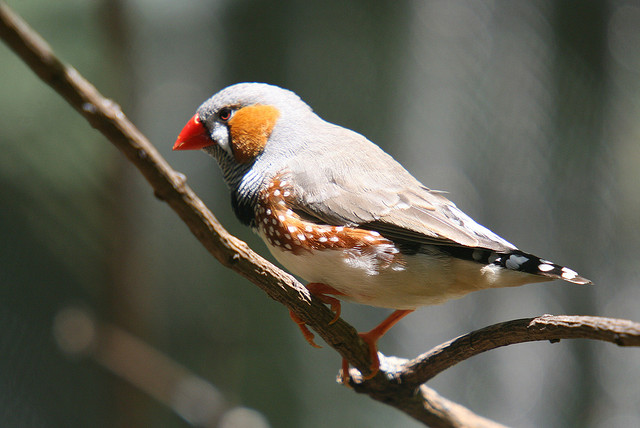
Young children have an uncanny ability to pick up new languages. Not only do they soak up vocabulary, they also construct new sentences of their own. This ability to use grammar is the essence of language. It’s not enough to know the meanings of words, you also have to understand the structures and rules by which words are put together.
The predominant view has been that humans are unique in this ability. But any time that we utter the words ‘uniquely human’, scientists seem to take it as a challenge to disprove this notion. And language is no exception. If you’re looking for the species that most closely matches our linguistic prowess, surprisingly, you won’t find it in the apes, the primates, or even in the mammals. You have to travel to a far more distant relative, all the way to a family of birds known as the songbirds.
The vocal life of a songbird is similar to ours in many ways. They learn songs by imitating their elders. Like human speech, these songs are passed down from one generation to the next. Songbirds are also best equipped to learn songs in their youth, and they have to practice to develop their ability. They can improvise and string together riffs into new songs, and over generations these modified songs can turn into new dialects. And like us, they come hard-wired with ‘speech-centers’ in their brain that are dedicated to language processing.
But languages are not just learned, they can also be invented. A striking example comes from the deaf community of Nicaragua in the 1970s. Back then, deaf people in Nicaragua were isolated both physically and through language. By the 1980s, the government set up schools for the deaf to teach them Spanish and how to lip-read. This turned out to be an unsuccessful endeavor. The teachers were growing increasingly frustrated as they were not getting through to the students.
However, things were quite different from the point of view of the students. For the first time, they were in contact with many other deaf people, and they started to exchange gestures that they had invented in isolation. At first the teachers thought this gesticulation was a kind of mime, but the reality was far more interesting. By getting together and pooling their ideas, these children had actually invented a new type of sign language, complete with its own grammatical structure. Here was proof that a new language could be born out of cultural isolation, a testament to our innate abilities to understand grammar. And in a few generations, users of this language were employing newer, more nuanced grammatical structures.
And this re-invention of language has been mirrored in the songbirds. An experiment from 2009 by Fehér and colleagues took newly hatched songbirds of the zebra finch species and raised them in sound proof chambers. They did this during their critical period of language development. Much like the Nicaraguan children, these birds were raised in a world without song. What happened next is quite surprising.
Continue reading Dissecting the language of the birds, or how to talk to a songbird
